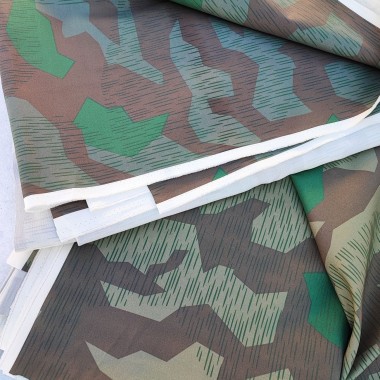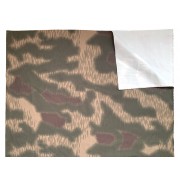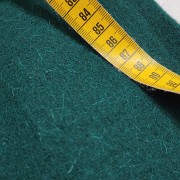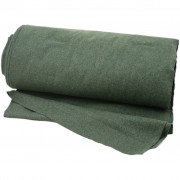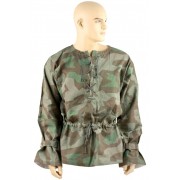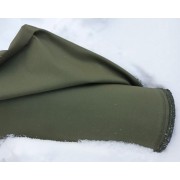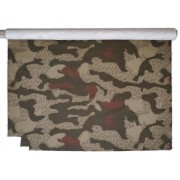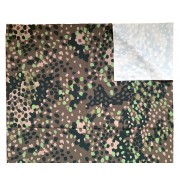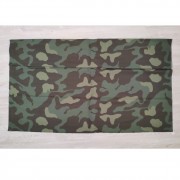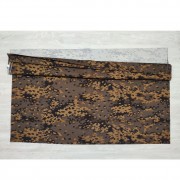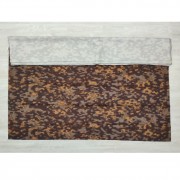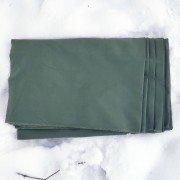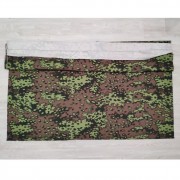Description
We offer 2 shades of camouflage:
- spring-autumn (more gray, dull tones)
- summer (more yellow, warm
Price for 0.1 running meter (a stripe of 10x155 сm or 4x61 inch) of fabric. 10 units of the item = 1 running meter. For example, you can buy 0.3 running meters (a piece of 30x155 cm) and sew a pair of caps from it. We do not have a lot of fabric, and it is in pieces of 2-3 meters. So it may happen that a piece of fabric will not be whole (for example, consist of two). We will try to choose a whole cut, and if it is not whole, we will warn you and offer options. You can also ask before the purchase.
One-sided camouflage material. Base: 100% cotton. Width 1.5 m, density (weight) 210 g/m². When burning turns to ash, no plastic! Suitable for caps, camouflage blouses, winter clothes, covers, as a tablecloth. It can also be used as a tent, but fabric for tents is usually denser and heavier. This fabric gets wet in the rain. To improve the hydrophobic properties, you can independently apply the impregnation after the purchase (in the washing machine or from an aerosol can). It must be understood that no natural fabric, except for special tents or wind-jackets, has hydrophobic properties (absorbs water). The fabric on German winter jackets and Soviet quilted jackets willingly absorbed water.
If you want to sew something, we recommend that you find a tailor and consult with him before ordering. We do not know how much fabric is needed for your product! Cuts of fabric are not subject to exchange and return. If you need a probe — buy 0.1 m, it is not expensive.
Why is our camouflage better?
We use quality expensive paint. The camouflage fabric is resistant to abrasion and can withstand a large number of washings without losing color saturation. The colors are selected from the originals, given that the originals, as a rule, have lost some of their color over the past 80 years of use and storage. We made the selection of colors responsibly.
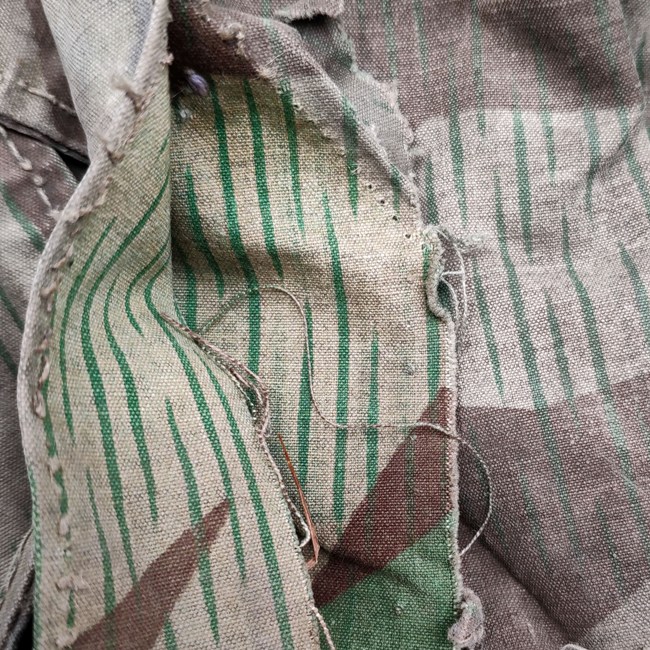
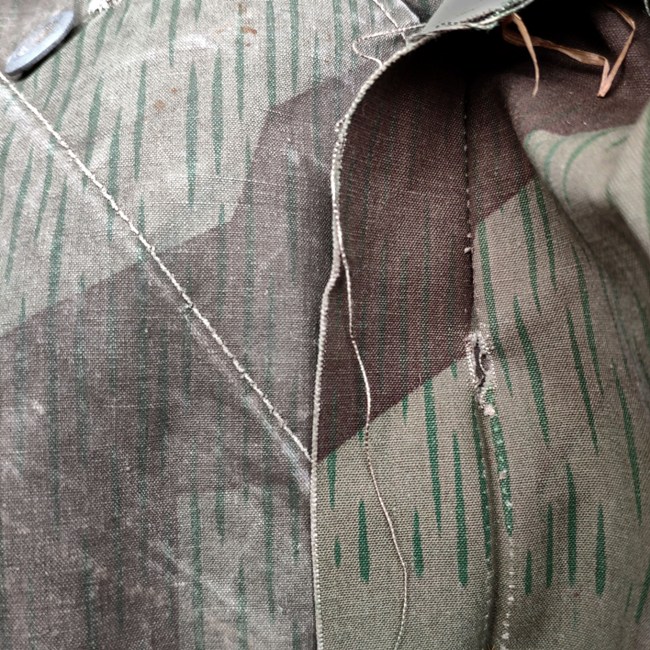
In the photo is the original Zeltbahn tent, spreading along the edge. You can see the colors as they were right after the manufacture of the fabric, compared to a faded and dirty surface that cannot be used for color matching.
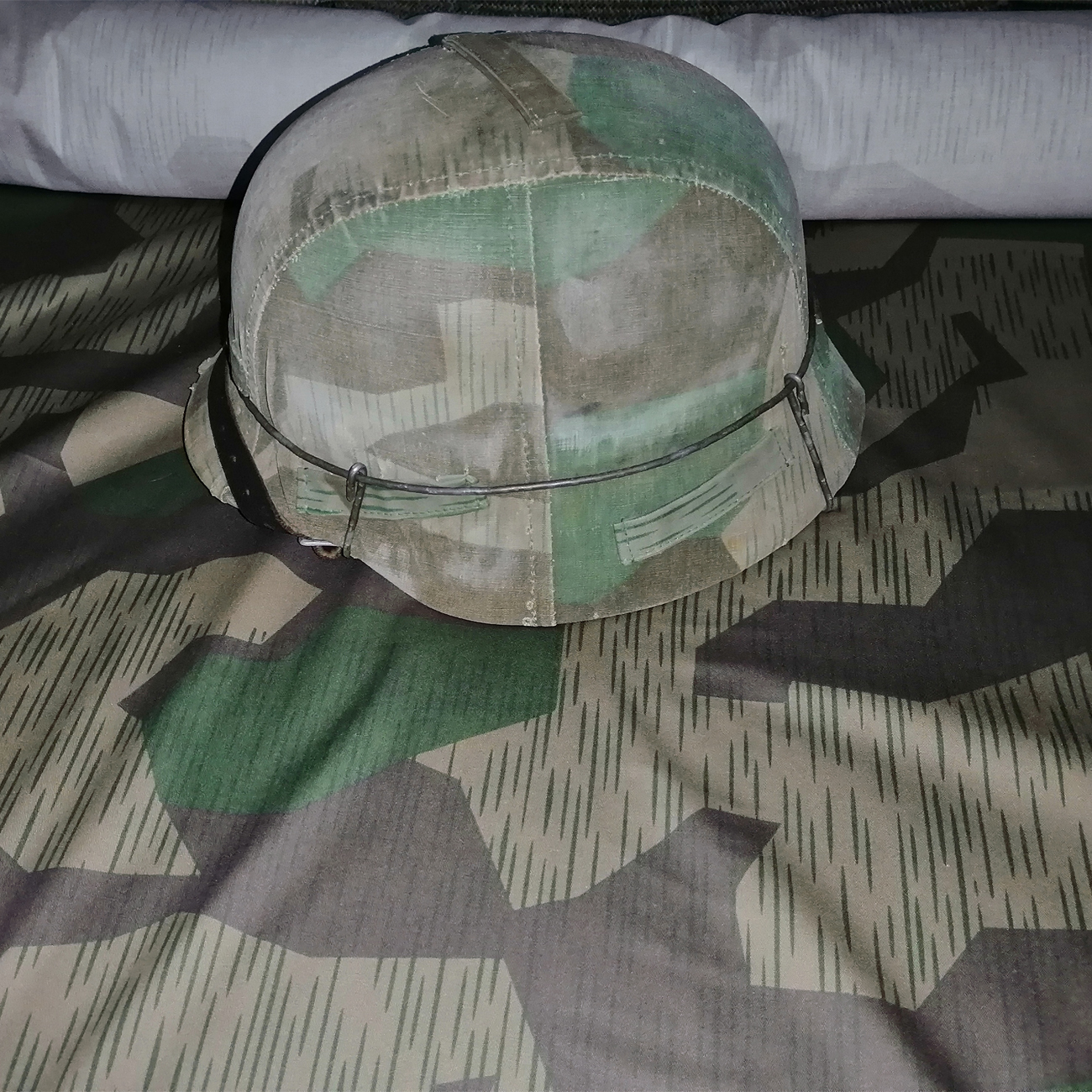
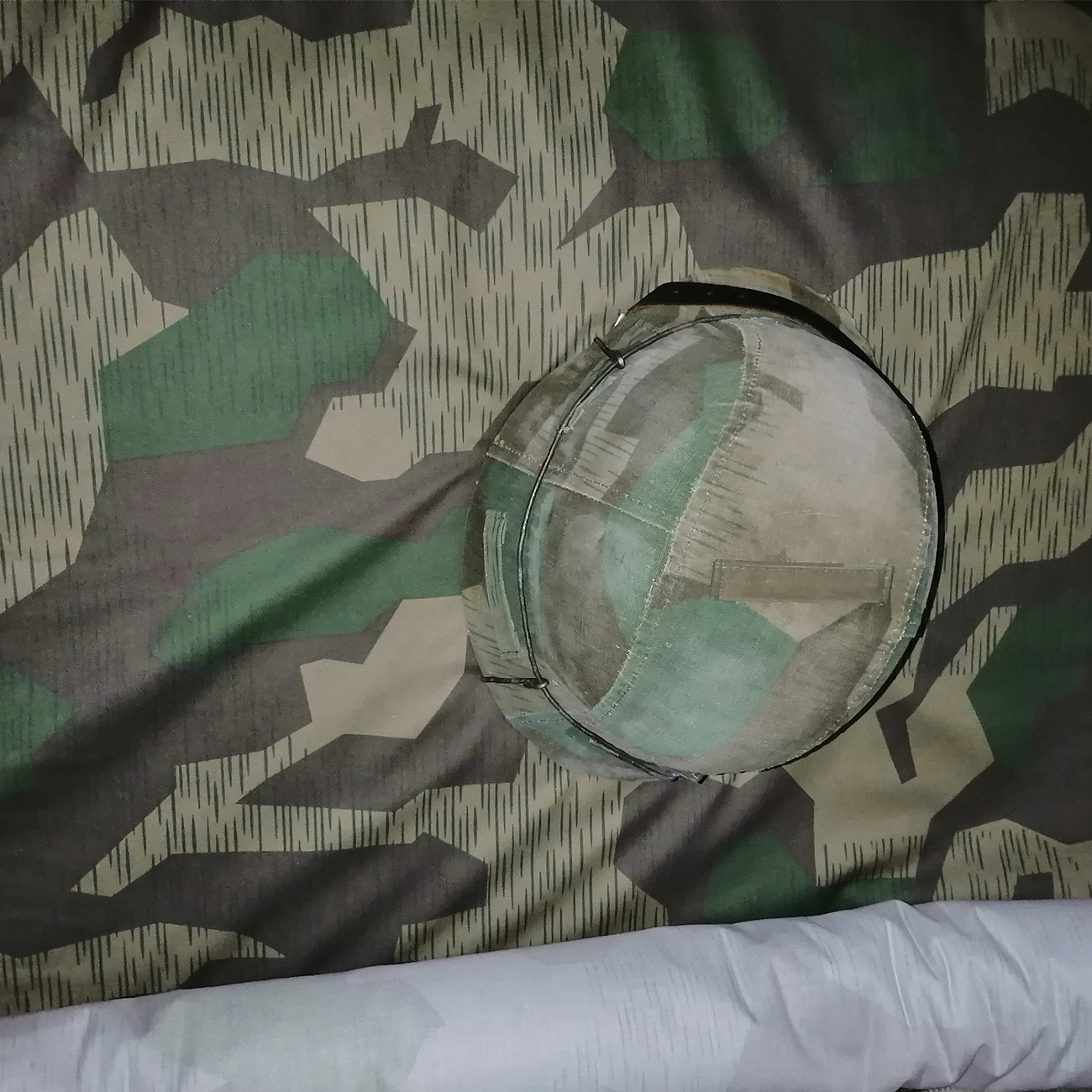
Helmet cover made of original fabric on the background of a piece of our camouflage (summer shade). You can see that the original color matches well with the copy.
We design the drawing, not just scan the original. If you just take a picture of the fabric, you might be surprised: the camouflage will not dock, it will contain printing errors (which will be repeated from meter to meter on the copy) etc. Having the original camouflage fabric in your hands, not from one, but from several samples of uniform and equipment , we study the features of camouflage construction. After reconstructing the camouflage pattern, it is being finalized in a few steps, in order to get a camouflage pattern ready for printing without errors.
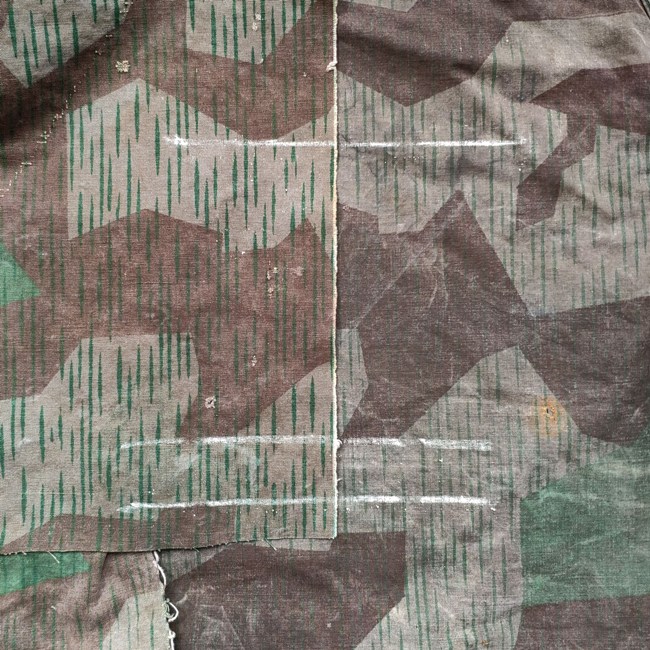
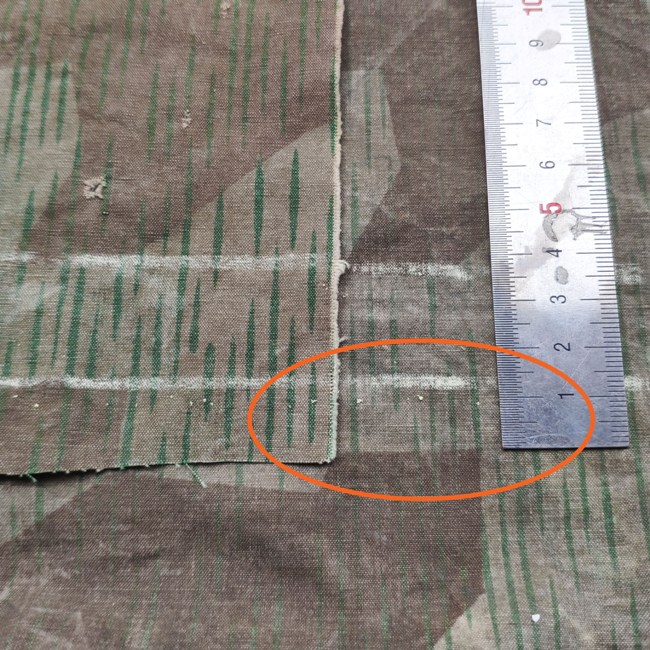
Two pieces of different original Zelts. It can be seen that their camouflage pattern differs both in the size of the spots and location (the distance between them). Chalk marks shows where the spots should coincide. The photo on the right shows that the distance between the same spots on different fabrics differs by 1.5 cm. Too much for shrinkage (because the reason for this is not shrinkage, but the difference in the patterns on the print rolls). Most likely, the fabrics were made in different factories, although they are extremely similar at first glance, and the difference is not noticeable without a ruler.
The pattern of the "pine needles" or "rain stroke" on the Splinter camouflage does not coincide in length with the pattern of large spots. Therefore, the pine-needles are constantly shifting relative to spots, and the final pattern is never repeated! Moreover, the pine-needles pattern does not repeat across the entire width of the canvas. Many manufacturers neglect this, as this requires additional attention and manufacturing costs. They take a small piece of camouflage (a square with a side of half a meter, for example) and loop it on all sides. We have a completely different level of camouflage manufacturing! Our camouflage really works, and does not imitate camouflage.
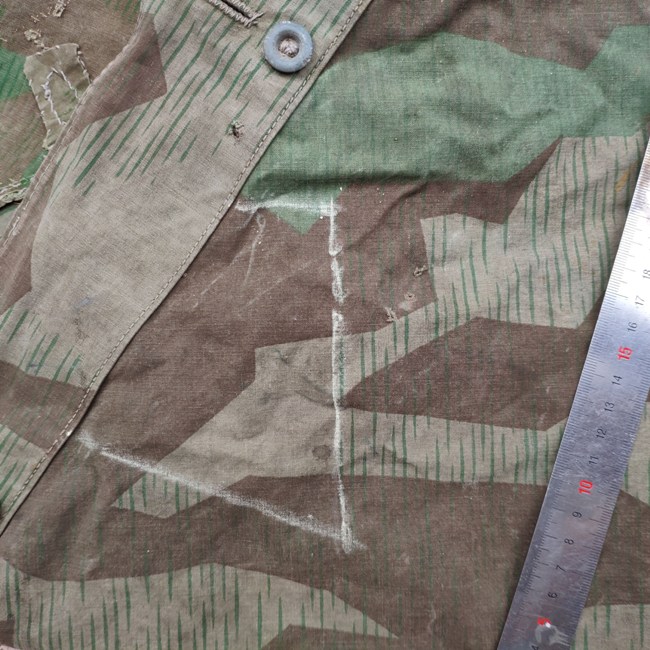
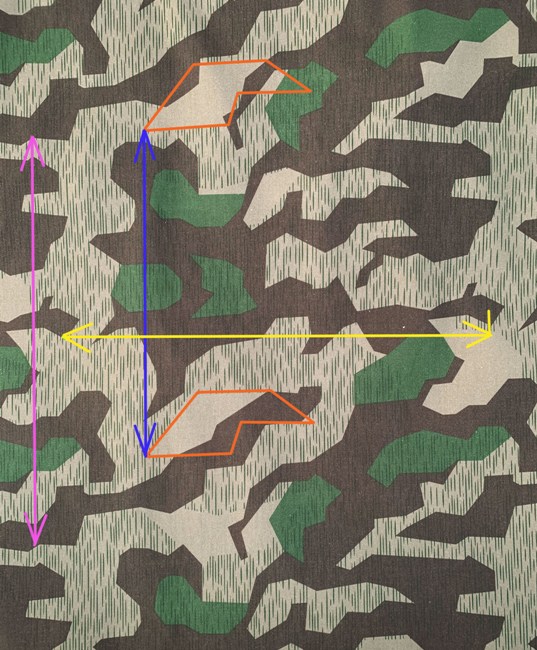
On the left it is shown how the scheme of "blind spots" on the "pine needles" is created. Strokes are not solid rain wall! They form spots of a certain shape. The camouflage of our production is shown on the right: the blue arrow shows the repetition of “blind spots” on the pine needles, the pink arrow shows the repetition of large spots (the length of the arrows differs). The yellow arrow indicates that the large spots pattern is repeated with a slight slope, and the pattern of the pine needles does not coincide with it and is not repeated in width as well.
Even the smallest nuances are observed. For example, on the green spots on the Splinter camo are bigger than an empty space under them. Their edges go to brown spots. Thus, the appearance of a light clearance between dark spots is excluded.
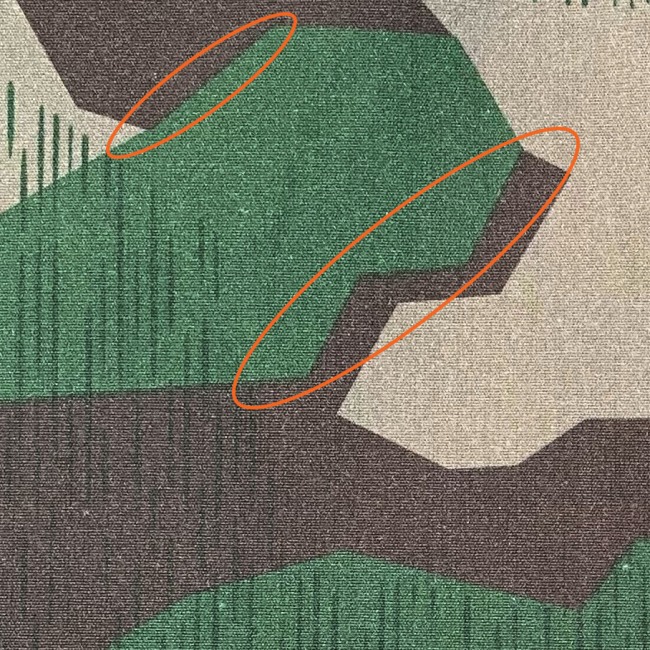
The photo shows camouflage of our production, where you can see how green spots go on brown. I don’t bring a photo of the original, try to find it yourself... It will be easy, because this is the basic feature of any pattern. However, patterns created by the digital method, that is, modern ones, are devoid of this "drawback". Accordingly, some simplified copies are made better than they could in the 1940s.
The pattern of the pine needles, as we have already said, has "blind spots". The application technology is such that the “strokes” do not stop abruptly, but end with “droplets”; their tips are round, sometimes blurry. Many manufacturers do not study the technology of production of German camouflage, and do not even know about such trifles that we carefully consider in our copies.
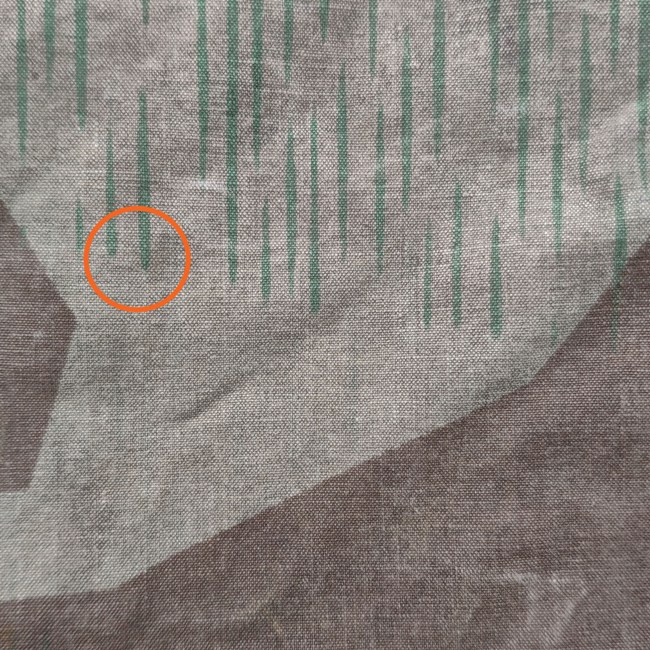
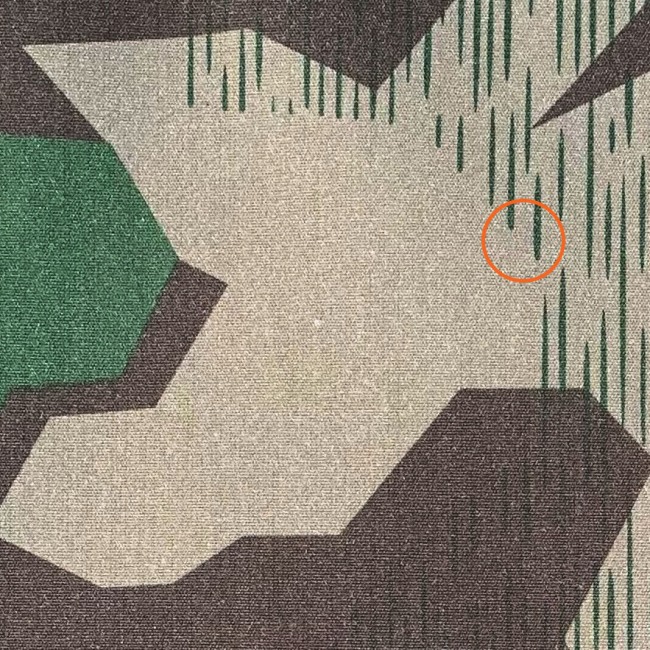
In the photo on the left is the original camouflage (the colors on the original faded, you do not need to pay attention to them, we show only the camouflage scheme). In the photo on the right is our copy. The orange circles show small features of the pattern.
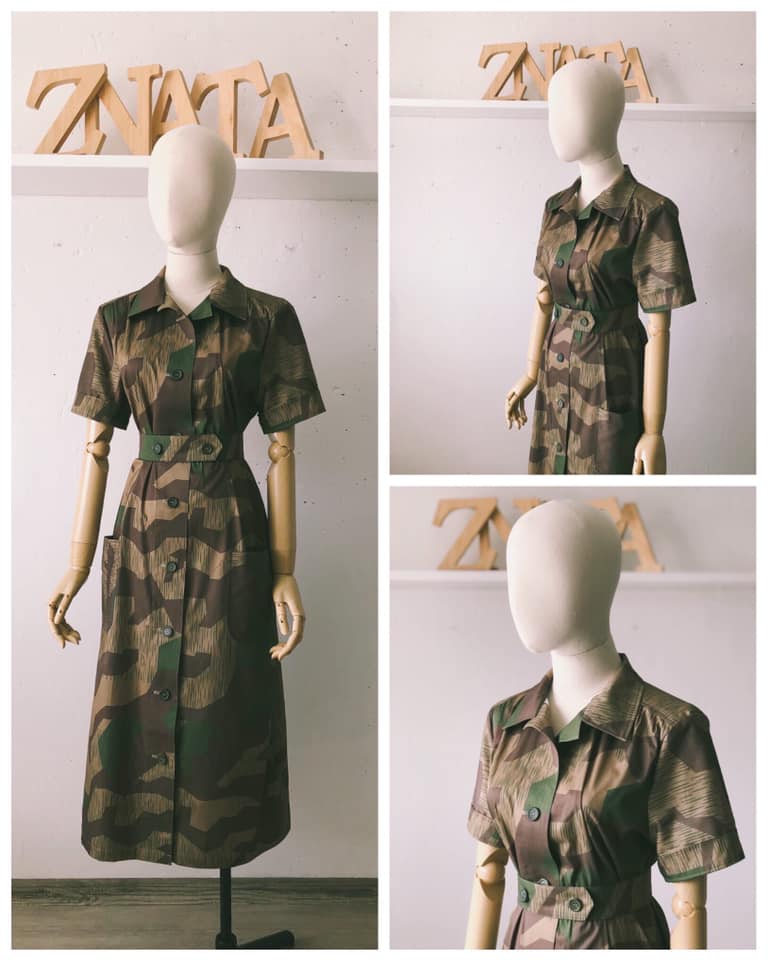
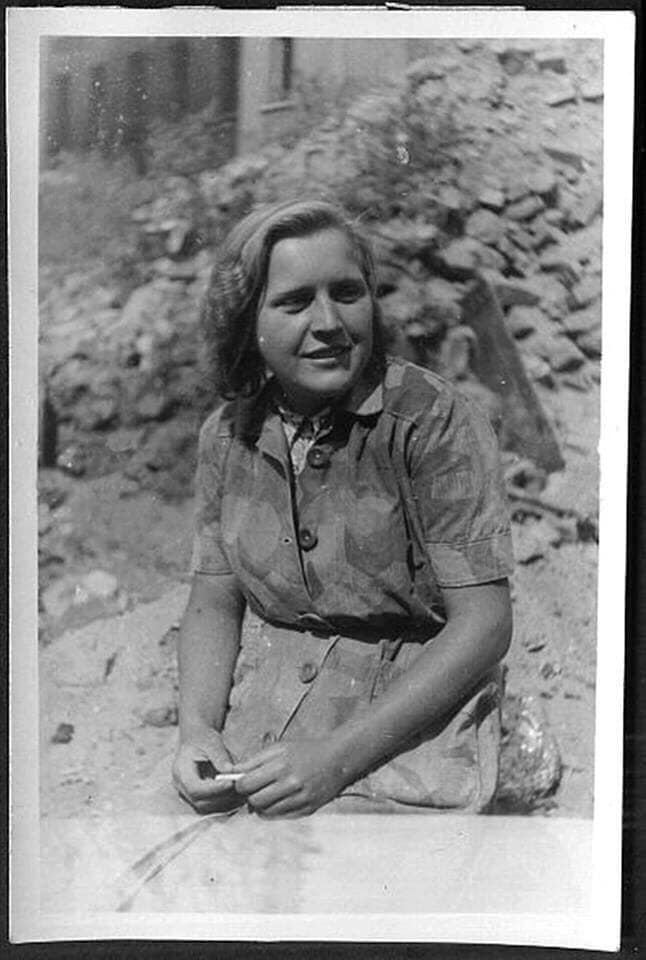
Dress made from fabric produced replik.ru (summer color scheme) by the craftswoman ArtZNata in July 2020 on the model of the original product.
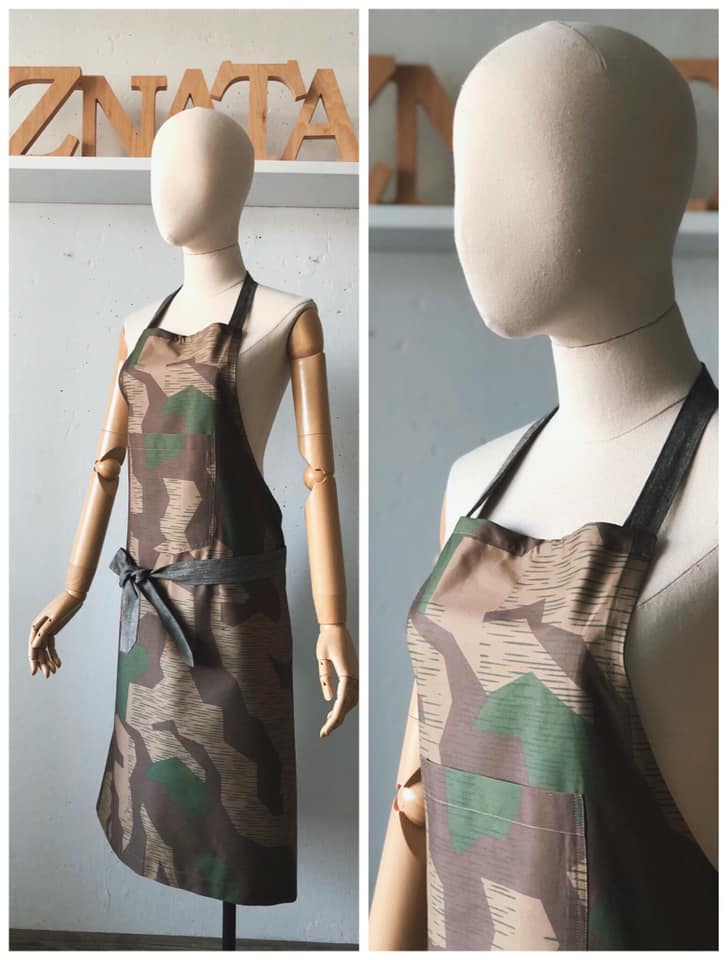
Apron, sewn from fabric produced replik.ru by ArtZNata in July 2020.










